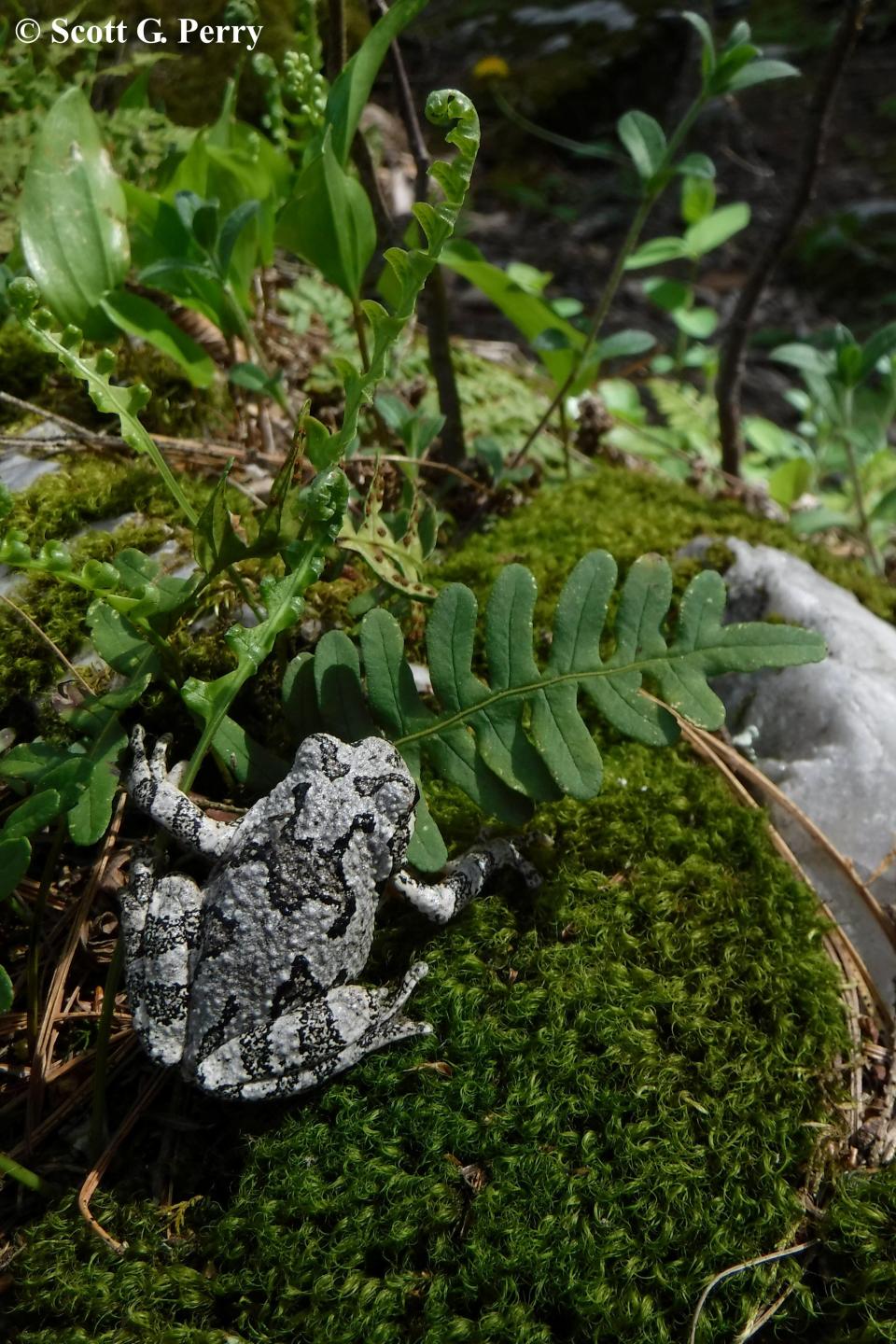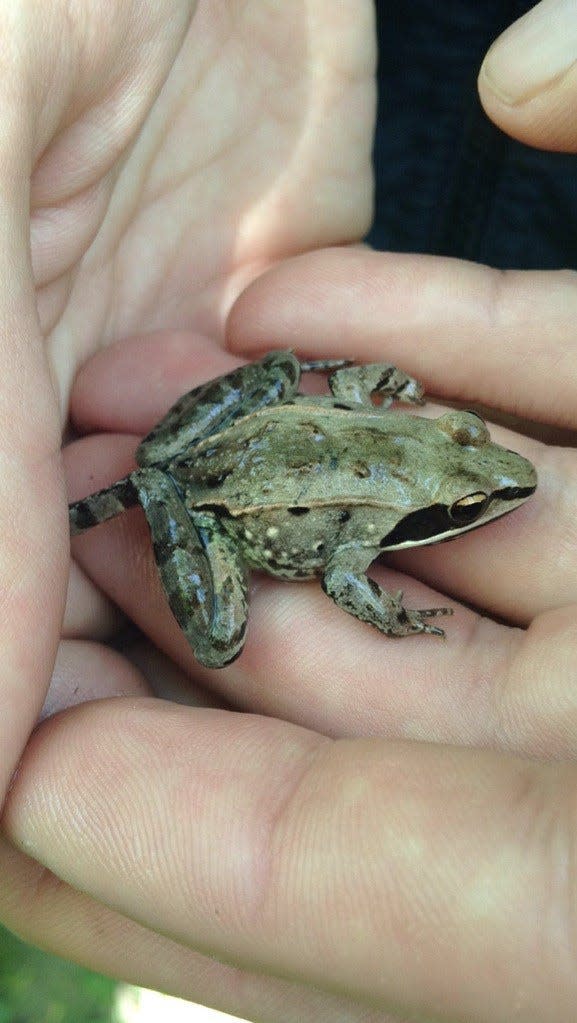A guide to the frogs and toads of NJ: Species, habitats, range, and identifying features
New Jersey is home to a total of 16 species of frogs and toads, 13 of which have been spotted in North Jersey.
They live in a range of habitats from lakes to forests to right in your backyard, which could explain the loud screechy noises you have probably heard at one point or another because, oddly enough, many of them don't say "ribbit."
What is the difference between a frog and a toad anyway?
Frogs vs toads
As convincing as the beloved children's books may be, frog and toad are probably not best friends in real life.
While they are both amphibians, there are a few factors that differentiate frogs from toads. According to the National Aquarium, scientists categorize toads as a type of frog and the general rule is that "all toads are frogs, but not all frogs are toads."
The first way to tell them apart is by their physical characteristics including skin moisture, skin texture, and leg length.
Frogs have thin, permeable skin allowing them to absorb water and a layer of mucus that keeps them moist and gives them a slimy feel. They also have a very smooth skin texture. Additionally, frogs have long, muscular hind legs, according to the National Aquarium.
Story continues below gallery
Toads have dry, thick skin with bumps that are often referred to as warts. These "warts" are really poison glands called paratoid glands which protect them from predators. Toads also have stumpy hind legs and move in short hops.
Another way to tell the difference is by their habitat. Frogs typically live closer to aquatic habitats while toads are often found in dryer terrestrial habitats.
If you come across frog or toad eggs floating around, you can tell which is which based on their shape and location in the water. According to the National Aquarium, frogs lay eggs in masses under the water's surface while toads lay eggs in long, floating strands.
Now that you know the difference between frogs and toads, here is a guide to all of the frogs and toads that can be found in North Jersey per the New Jersey Fish and Wildlife online field guide for reptiles and amphibians.
American toad
Where and when to find them: The American toad can be found almost anywhere from backyards to remote woodlands all over the state's northern region except for southern Monmouth County. They are active from March through late September and breed from March to June.
Key features include:
One or two large warts in each large dark spot
Parotoid gland separated from the large ridge behind the eye or connected only by a spur
Chest and abdomen spotted with dark pigment
Bullfrog
Where and when to find them: Bullfrogs can be found all over the state in bodies of freshwater, typically in the vegetation at the water's edge. Their breeding season runs from April through July.
Key features include:
The largest frog in New Jersey ranging from 3-and-a-half to 8 inches
Green dappled with gray or brown; whitish underside
Males may have a yellow throat and their eardrum is larger than their eye
No dorsolateral ridge; ridge runs from eye, past the eardrum, and down to the shoulder rather than down the back
Eastern spadefoot (toad)
Where and when to find them: Eastern spadefoot toads are found in all of South Jersey with one historical record in North Jersey in Warren County. They can be found in forests or fields with loose or sandy soil. They are active from April through September, but may burrow underground for years, only surfacing after heavy, warm rain.
Key features include:
Large yellow eyes
Vertical pupil
Sharp, black spade on each foot
Fowler's toad
Where and when to find them: The Fowler's toad can be found in sandy habitats all over the state but are more common in South Jersey. They breed in vernal pools, ditches, and the shallow edges of lakes and ponds. They are active from March through late September with a breeding season from late spring to mid-August.
Key features include:
Three or more warts usually present in each large spot
Chest and belly often unspotted
Color ranges from gray to olive or brown with patterns of warts, spots and blotches
A light line runs down the center of the back
Green frog
Where and when to find them: Green frogs can be found in any part of the state in potentially any body of freshwater. They breed from April through August.
Key features include:
Color ranges from green to brown
White belly with spots under legs and head
Males have a yellow throat, and females have a white throat
New Jersey chorus frog
Where and when to find them: New Jersey chorus frogs can be found in all of South Jersey and the eastern part of North Jersey. They breed in swamps and vernal pools from February to June.
Key features include:
Color ranges from gray to brown to olive
Light stripe on the upper lip and a dark stripe through the eye that runs down the flank to the groin
A dark triangle may be present between the eyes and three thick, dark stripes are usually present running down the back
Northern cricket frog
Where and when to find them: Northern cricket frogs can be found almost anywhere in the state near sunny, shallow, permanent pools or streams with plants for shelter. They breed from April to June.
Key features include:
Warty skin and highly webbed feet
Dark triangle-shaped blotch between eyes
Dark stripe on thighs
Northern gray treefrog

Where and when to find them: Northern gray treefrogs can be found all over the state, spending most of their time high in the trees. During their breeding season from May through July they can be found at the edge of vernal ponds or swamps.
Key features include:
Large with warty skin
White spot may be present under eyes
Large, round toe pads
Northern spring peeper
Where and when to find them: Northern Spring peepers can be found all over the state in a variety of habitats. They breed in almost any body of freshwater from early March through May.
Key features include:
A dark, imperfect "X" is almost always visible on the back
Round toe pads with little webbing on the feet
Pickerel frog
Where and when to find them: Pickerel frogs can be found all over New Jersey, except for the core pinelands, in a variety of habitats from clear streams to meadows or brown, murky waters along the coast. They breed from March to May. Outside of breeding season they can be found away from the water in vegetated areas.
Key features include:
Brown in color
Two rows of imperfect dark squares down the back
Concealed surfaces of legs are orange/yellow
Dorsolateral ridges are present
Southern leopard frog
Where and when to find them: Although rare in North Jersey, southern leopard frogs can be found all over the state. They are usually found in shallow freshwater, but occasionally in brackish marshes. Outside of breeding season, which lasts from late March through June, they can be found away from the water in vegetated areas.
Key features include:
Bright green or rich brown color
Two or three rows of dark spots down the back
Light spot may exist on the tympanum and a light line may be present along the upper jaw
Upland chorus frog
Where and when to find them: Upland chorus frogs can be found in Sussex, Warren, Hunterdon, Morris, northwestern Bergen, western Somerset, and western Passaic counties. They breed in swamps and vernal pools from February to May.
Key features include:
Brown or gray in color
Dark stripe that runs through the eye from the snout to the groin
Dark triangle may be present between eyes
Three dark stripes running down the back
Wood frog

Where and when to find them: Wood frogs can be found in moist, wooded areas all over the state. They breed from late February to May in vernal pools. Outside of breeding season they can be found in the woods away from water.
Key features include:
Color varies from pink to brown
Dark mask extends backwards from the nose
Dorsolateral ridges present
New Jersey's threatened and endangered frogs and toads
Two species of frogs and toads in New Jersey are classified as either endangered or threatened species.
Endangered species are defined by NJ Fish and Wildlife as species whose "prospects for survival in New Jersey are in immediate danger because of a loss or change in habitat, over-exploitation, predation, competition, disease, disturbance or contamination."
Endangered species need assistance to prevent future extinction in the state.
Threatened species are defined as species "who may become endangered if conditions surrounding them begin to or continue to deteriorate."
As of right now, the Pine Barrens treefrog is endangered and the southern gray treefrog is threatened.
Pine Barrens treefrogs can be found in Burlington, Ocean, Atlantic, Camden, and Gloucester counties, primarily restricted to the acidic waters of the Pine Barrens. Although much of their habitat has been protected within the Pinelands National Reserve, threats of habitat loss and pollution of breeding ponds still exist resulting in them being on the endangered species list.
Pine Barrens treefrogs are a very vibrant bright green color with a lavender stripe outlined with white running through their eye and along the sides of their body.
Southern gray treefrogs can be found in Cape May and southern Cumberland, Ocean, and Atlantic counties. They spend most of their time in high trees except during breeding season which runs from May through July. During this time, they can be found near water. They were first listed as endangered in 1979 due to habitat loss combined with their limited distribution. According to NJ Fish and Wildlife they are now listed as threatened.
The southern gray treefrog is nearly identical to the northern gray treefrog aside from their distinctly different calls.
This article originally appeared on NorthJersey.com: Guide to New Jersey frogs and toads

